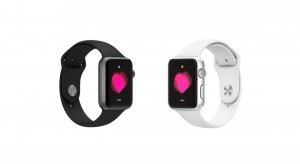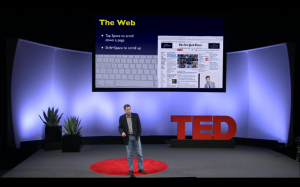 As one of the most innovative and profitable companies on the planet, Apple makes headlines when it makes announcements. This week Apple announced several important new products, each of which represents trends in a fast changing industry. Larger iPhones bridge the gap between smart phones and tablets. A mobile payments system designed to bypasses credit cards and protect privacy and security of users. And Apple’s long-awaited entry into the wearable computer market that has humbled several other companies. Technology writer Steven Levy’s thought-provoking piece for Medium suggests that the Apple watch may signal the beginning of a new, much more intimate type of interface between humans and their digital devices.
As one of the most innovative and profitable companies on the planet, Apple makes headlines when it makes announcements. This week Apple announced several important new products, each of which represents trends in a fast changing industry. Larger iPhones bridge the gap between smart phones and tablets. A mobile payments system designed to bypasses credit cards and protect privacy and security of users. And Apple’s long-awaited entry into the wearable computer market that has humbled several other companies. Technology writer Steven Levy’s thought-provoking piece for Medium suggests that the Apple watch may signal the beginning of a new, much more intimate type of interface between humans and their digital devices.
Category: 4.4 The User Interface: The Human-Machine Connection
 David Pogue is one of the most prolific–and entertaining–tech writers we know. In this short TED talk, he runs through a list of tips that can save you time every day. Don’t miss it.
David Pogue is one of the most prolific–and entertaining–tech writers we know. In this short TED talk, he runs through a list of tips that can save you time every day. Don’t miss it.
Rumors of a Facebook phone have rattled around the tech world for quite a while. Today Facebook announced not a a phone, but software that can convert many Android phones into Facebook machines. Facebook is available in app form on most smart phones. But the new Facebook Home software will replace the Android home screen with a Facebook-centered home, making it possible for social networkers to keep Facebook at the center of their phone experiences. Will Android phone users click Like?
http://www.wired.com/gadgetlab/2013/04/facebook-android-home-phone/?cid=6882274
The smart phone in your pocket is a computer that’s much more powerful and easy to use than the mainframes of yesterday. But if this research project pans out, that phone may eventually be a replaced by a small patch on the back of your hand.
fastcodesign.com/1672217/stamp-on-circuits-could-put-your-phone-on-your-finger
Just as the mouse made the command-line interface of early PCs seem primitive, the touch screen may soon put the mouse out of a job. But after you see this short video, you may think that even the touch screen is old-fashioned. Once again, science fiction points the way to future technology.
wired.com/gadgetlab/2013/01/leap-motion-asus
Microsoft will soon offer two new versions of its ubiquitous Windows operating system. Windows 8 is designed to replace Windows 7 as the flagship PC OS. Windows RT will run mostly on Microsoft’s new Surface and other tablet devices. This CNET article gives an overview of the two OSs and how they fit into a world where the line between tablets and laptops is blurred by all kinds of hybrid devices.
reviews.cnet.com/8301-33642_7-57536310-292/windows-8-buying-guide/
Personal robots are coming. This fascinating NPR story gives an audio peek inside the labs that are working hard to bring robots to everyday people.
wbur.org/npr/155278207/you-know-you-want-one-personal-robots-not-ready-for-you-yet
Will Your Phone Read Your Mind in 2016? Ask IBM
asmarterplanet.com/blog/2011/12/the-next-5-in-5-our-forecast-of-five-innovations-that-will-alter-the-landscape-within-five-years.html
As noted in Chapter 1’s Inventing the Future, predicting the future isn’t easy. But when the predictions are backed by one of the world’s biggest technology innovators, they’re worth considering. In this short, clever video, IBM describes and illustrates “5 in 5″— five technological breakthroughs that could reshape our lives within five years.
NPR.org/2011/12/26/144146395/the-touchy-feely-future-of-technology
A few years ago touch-screen devices were novelties; today they’re everywhere. Hundreds of millions of smart phones and tablets are profoundly changing the ways people interact with tools, the Internet, and each other. This excellent NPR report covers the evolution of touch technology. Segments examine unusual uses, social implications, and future applications of this rapidly-changing technology. The site includes both text and audio versions of the story.
Wrist communicators were popular in science fiction and comic strips decades ago. Are they going to take off in the real world soon? This Fast Company article speculates about what might happen when a wrist watch connects to a smart phone. Is this the next small thing?